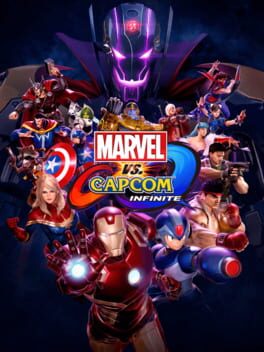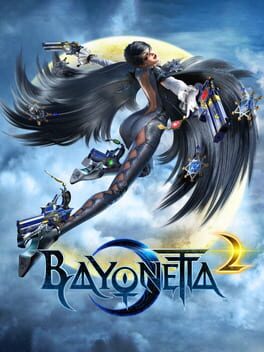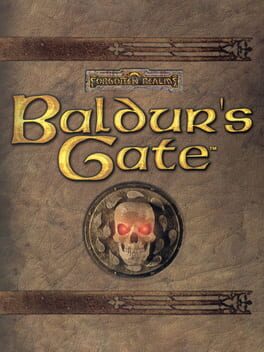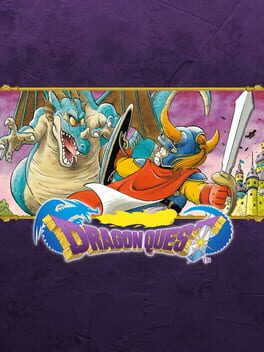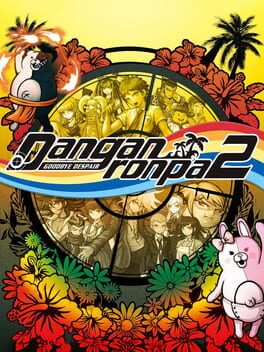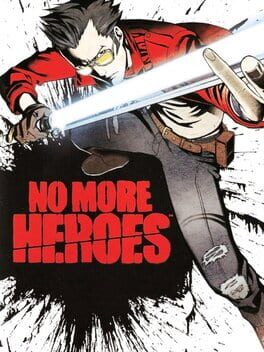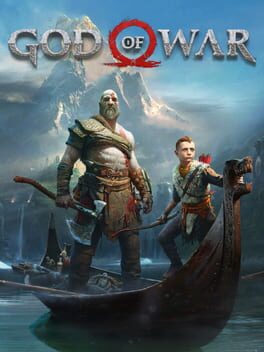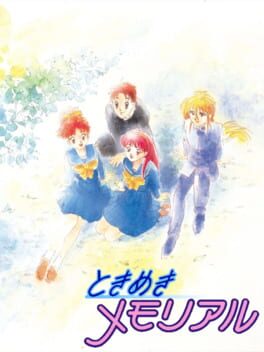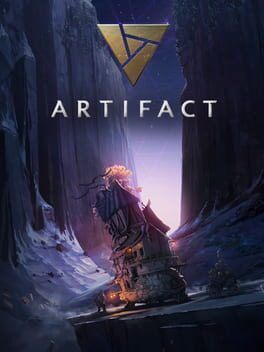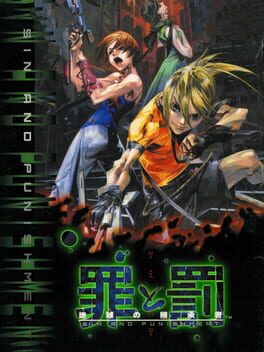DrDelicious
This review contains spoilers
It's hard to exactly state why Dragon Quest V is so important without spoiling the whole premise of the game itself so here it is. Dragon Quest V features probably one of my favorite twists ever in a JRPG, one that both encapsulates the spirit of Dragon Quest while being bold in its own right.
The story unfolds through the life of Abel (the "Hero" of this game, at least that's what people tell me his name is.) where he starts out as a child, unable to even read, as he follows his dad Pankraz along on his journey. Pankraz has true dad energy. He's strong, brave, and caring to his son along with everyone else, and he helps Abel decimate any threat along the way and even heals you. However things go dark a few hours in when after a failed attempt to save Prince Harry from a kidnapping, Pankraz dies to the evil Ladja but before he does he tells Abel his lost mother is still alive and then he gets blasted by a Kafrizzle. Abel and Prince Harry are then sold into slavery until they are in their teens whereby the help of someone else, they are able to escape in a barrel out onto the sea. From there, you get your typical Dragon Quest affair.
Then something happens, the time skips and Abel starts to rule a kingdom on his own, much as his father did. And he gets married to a choice of three different girls. And hey, guess what? She gives birth. Twins! One boy and one girl! And after another time skip, they grow old enough to become party members! And they're pretty good for being children too.
This is when sometime in the late game you learn something from another NPC, and that all this time Abel, your player character is not the almighty chosen one to take down the evil Nizmo that has been causing chaos around the country. No, it's your son instead.
That's when I got Dragon Quest V's message. It hit me like a freight train. Dragon Quest up to this point has always been about you, the player, destined to go out on this journey to a vast unknown land to take down an ambiguous evil entity and be the hero you were always destined to be. But here, Dragon Quest V tells you you're not this grandiose hero, at least not in the cliche "prophesized" way, no, you are a hero because you are like Pankraz.
Pankraz had a heart of gold from the start, he used to be a great ruler of his kingdom but more importantly, he was a true father through and through. He loved his wife and son more than anything, but he died a horrible, tragic death in an attempt to protect his son. All this time, you follow in your father's footsteps. You fall in love, you have children of your own to protect, you help those in need, and you even lead a kingdom of people. Your righteousness completely mirrors that of Pankraz.
So when Dragon Quest V states that it is your son that you raised that is destined to become the chosen one, that's not a cheap shot to get a subversive expectation in the script, it felt earned. Because in the end, your actions lead to that point. You may not be explicitly told you are "the hero", but a real hero doesn't need to be told that he is destined to be great, a hero is someone who is already righteous enough as is. Pankraz was a righteous man who kept his head up high until the end. He was a hero. His successor Abel, much like his father, is a hero in his own way too.
And I think there's something so genuinely wholesome about that, it keeps the essence of Dragon Quest's commitment to you being the hero but in a different more down-to-earth kind of way. I think that's the reason this Dragon Quest especially has stuck with me the most, because that message is just so relatable and pure it makes this almost 29-year-old game stand all of the time skips.
The story unfolds through the life of Abel (the "Hero" of this game, at least that's what people tell me his name is.) where he starts out as a child, unable to even read, as he follows his dad Pankraz along on his journey. Pankraz has true dad energy. He's strong, brave, and caring to his son along with everyone else, and he helps Abel decimate any threat along the way and even heals you. However things go dark a few hours in when after a failed attempt to save Prince Harry from a kidnapping, Pankraz dies to the evil Ladja but before he does he tells Abel his lost mother is still alive and then he gets blasted by a Kafrizzle. Abel and Prince Harry are then sold into slavery until they are in their teens whereby the help of someone else, they are able to escape in a barrel out onto the sea. From there, you get your typical Dragon Quest affair.
Then something happens, the time skips and Abel starts to rule a kingdom on his own, much as his father did. And he gets married to a choice of three different girls. And hey, guess what? She gives birth. Twins! One boy and one girl! And after another time skip, they grow old enough to become party members! And they're pretty good for being children too.
This is when sometime in the late game you learn something from another NPC, and that all this time Abel, your player character is not the almighty chosen one to take down the evil Nizmo that has been causing chaos around the country. No, it's your son instead.
That's when I got Dragon Quest V's message. It hit me like a freight train. Dragon Quest up to this point has always been about you, the player, destined to go out on this journey to a vast unknown land to take down an ambiguous evil entity and be the hero you were always destined to be. But here, Dragon Quest V tells you you're not this grandiose hero, at least not in the cliche "prophesized" way, no, you are a hero because you are like Pankraz.
Pankraz had a heart of gold from the start, he used to be a great ruler of his kingdom but more importantly, he was a true father through and through. He loved his wife and son more than anything, but he died a horrible, tragic death in an attempt to protect his son. All this time, you follow in your father's footsteps. You fall in love, you have children of your own to protect, you help those in need, and you even lead a kingdom of people. Your righteousness completely mirrors that of Pankraz.
So when Dragon Quest V states that it is your son that you raised that is destined to become the chosen one, that's not a cheap shot to get a subversive expectation in the script, it felt earned. Because in the end, your actions lead to that point. You may not be explicitly told you are "the hero", but a real hero doesn't need to be told that he is destined to be great, a hero is someone who is already righteous enough as is. Pankraz was a righteous man who kept his head up high until the end. He was a hero. His successor Abel, much like his father, is a hero in his own way too.
And I think there's something so genuinely wholesome about that, it keeps the essence of Dragon Quest's commitment to you being the hero but in a different more down-to-earth kind of way. I think that's the reason this Dragon Quest especially has stuck with me the most, because that message is just so relatable and pure it makes this almost 29-year-old game stand all of the time skips.
There's no safer statement out there than "Marvel vs Capcom Infinite was a disappointment" but for me at least it's not for the same reason you may come to expect.
The PR nightmares attached to the game leads to people pointing out the more obvious flaws of it. Never mind that the game is clearly a rush-job by Capcom and looks ugly as sin with character models clearly ripped from UMVC3 without the care put into the lighting/shading to mask any of the shortcomings those models got away with. Never mind that licensing shenanigans caused the game to miss characters from the X-Men or Fantastic4 franchise such as Wolverine, Dr.Doom, Magneto, Storm, or Sentinel, characters that were in the series since its inception. Never mind that the game's bizarre and nonsensical story mode was the most focused thing on its marketing which is a very strange thing to advertise such a mediocre mode. Never mind that Dragon Ball FighterZ came out just a few months after this game causing the game's player base to hemorrhage as fighting game players migrated to a seemingly more quality product. Never mind the fact that the DLC characters were obviously finished already and featured in the story mode but were locked behind a paywall so Capcom can milk out as much money as they can without developing many assets to create new fighters from the ground up. All of these are bad enough, but my main issue with the game stems from a design choice that was intentional from the start:
Why remove a 3rd teammate and assists?
The whole spirit of Marvel vs Capcom not only asked the player to learn a set of characters but put those characters together to create a coherent strategy. Take for example Phoenix from Marvel 3, she was an incredibly weak character with the lowest health in the game. But if the player were to die with 5 bars of super meter she would turn into Dark Phoenix, the strongest character in the whole roster. Combined with X-Factor, that game's comeback mechanic, she could wipe out entire teams. Teams that utilized Phoenix would create team compositions that required building 5 bars of super meter for Phoenix, creating teams that were defensive and conservative in spending super meter. Meanwhile, the opponent would try to either wipe out the team as fast as they could or snap-in Phoenix to kill her early, effectively decimating the win condition. It created matches that were tense and fast-paced, to both watch and play with or against.
This idea of strategy was hammered home with assists, the mechanic where you can call out a teammate to do a specific move. These assists can determine what kind of strategy the player can create which opened the door to a lot of decision-making. Take for example Captain Commando from Marvel 2. He by himself was an incredibly mediocre character that struggled to fend off the strongest characters in that game, but people used him because he had arguably the strongest assist in the game, this giant invincible shockwave that dealt a lot of damage and pops opponents in the air, leading to air combos. It was tantalizing to use, but then you'd be stuck using a character that was considered bad when your other two died, leading to a choice of choosing a bad character with a powerful assist, or a stronger character with a similar but weaker assist compared to Captain Commandos. This idea even shows up in Marvel 3 with Dante, who is a stronger character compared to Marvel 2 Captain Commando but is considered one of if not the hardest character to learn in the game due to his lengthy combo game and tight execution. However, Dante had Jam Session, an assist that creates an enormous wall that can stuff approaches and lead to combos if successfully landed. It's one of the best assists in the game, but if you want it without having a useless teammate, you had to put in the work to learn Dante and form a team around him. This is what defines Marvel vs Capcom for me, a fighting game that's not just about execution, but strategy and decision-making, and it's what made me fall in love with the series and invest a stupid amount of time in it.
The problem with MvC:I is that it decides to have a 2-man team set up right from the get-go. This feels heavily restrictive compared to the three-man team set-up of the older games since you can't exactly form something dramatically coherent with just two characters. What was supposed to replace the 3rd teammate is the infinity stone system, where you can choose one infinity stone to give your teammate a move or a timed super ability, but this isn't really choosing a strategy to commit to but more so choosing a power-up and therefore feels less engaging as a result. It's no longer about creating a team with a playstyle to commit to, but choosing the two characters you like to play as with the skill that looks the more useful.
To compensate for this two-team setup, the game gives the characters more moves to use and longer health bars as a result, with a pretty flexible combo system, as well as the ability to tag in a teammate mid-combo, which is what replaces assists, devolving the game into landing extremely long combos while doing pitiful damage. I get it, landing big flashy combos are awesome, but combos aren't just what makes Marvel vs Capcom the game it is. When you make every character into combo-heavy beat sticks, you are left with a roster that feels homogenized than the highly distinct roster of Marvel 2 and 3. You are left with matches that not only go on for long but look the same even if there are different characters on the screen, which I feel is a big step-down from how Marvel 2 and 3 handled things.
The issue with fighting games that remove options to cater to a different audience is that you are going to alienate a large portion of the audience that has stuck playing the game you've created for years. If you remove mechanics people loved and made your game distinct without adding something new that feels like a net positive, people are not going to migrate to your next entry. It's why we see the Smash Melee community still strong as it is because the other entries nearly don't have the same depth as that game does. It's why we see Marvel 3 players return to that game in the form of Parsec tournaments because they see that game as superior, and what made that game superior to this one is that it actually feels like a Marvel vs Capcom game.
For as many problems I have with Dragon Ball FIghterZ, I can at least acknowledge why so many Marvel players gravitated towards that game, not just because of the Dragon Ball license, but it's actually a team game. There are distinct characters with different team layouts and assists and you get to build whatever you want. While I think that game too can have a same feeling playing roster, I can at least say it's more engaging to play than a game afraid of its identity.
I don't have a lot of respect for Marvel vs Capcom Infinite because it represents the very worst kind of Capcom fighting game. A poor rush job game that failed to iterate on past entries and opts into doing something new that ends up making the game less interesting as a result. Unfortunately for Capcom, people are tired of fighting games that aren't fun to play, and it's why people have turned to a developer like ArcSys for their fighting game fix. Before Capcom could have gotten away with this since they were the king of the fighting game genre, but more effort needs to be put in place if they wish to compete with their newfound competition.
As for me, I'll sit back and play more Ultimate Marvel vs Capcom 3, Capcom should go back and play it too.
The PR nightmares attached to the game leads to people pointing out the more obvious flaws of it. Never mind that the game is clearly a rush-job by Capcom and looks ugly as sin with character models clearly ripped from UMVC3 without the care put into the lighting/shading to mask any of the shortcomings those models got away with. Never mind that licensing shenanigans caused the game to miss characters from the X-Men or Fantastic4 franchise such as Wolverine, Dr.Doom, Magneto, Storm, or Sentinel, characters that were in the series since its inception. Never mind that the game's bizarre and nonsensical story mode was the most focused thing on its marketing which is a very strange thing to advertise such a mediocre mode. Never mind that Dragon Ball FighterZ came out just a few months after this game causing the game's player base to hemorrhage as fighting game players migrated to a seemingly more quality product. Never mind the fact that the DLC characters were obviously finished already and featured in the story mode but were locked behind a paywall so Capcom can milk out as much money as they can without developing many assets to create new fighters from the ground up. All of these are bad enough, but my main issue with the game stems from a design choice that was intentional from the start:
Why remove a 3rd teammate and assists?
The whole spirit of Marvel vs Capcom not only asked the player to learn a set of characters but put those characters together to create a coherent strategy. Take for example Phoenix from Marvel 3, she was an incredibly weak character with the lowest health in the game. But if the player were to die with 5 bars of super meter she would turn into Dark Phoenix, the strongest character in the whole roster. Combined with X-Factor, that game's comeback mechanic, she could wipe out entire teams. Teams that utilized Phoenix would create team compositions that required building 5 bars of super meter for Phoenix, creating teams that were defensive and conservative in spending super meter. Meanwhile, the opponent would try to either wipe out the team as fast as they could or snap-in Phoenix to kill her early, effectively decimating the win condition. It created matches that were tense and fast-paced, to both watch and play with or against.
This idea of strategy was hammered home with assists, the mechanic where you can call out a teammate to do a specific move. These assists can determine what kind of strategy the player can create which opened the door to a lot of decision-making. Take for example Captain Commando from Marvel 2. He by himself was an incredibly mediocre character that struggled to fend off the strongest characters in that game, but people used him because he had arguably the strongest assist in the game, this giant invincible shockwave that dealt a lot of damage and pops opponents in the air, leading to air combos. It was tantalizing to use, but then you'd be stuck using a character that was considered bad when your other two died, leading to a choice of choosing a bad character with a powerful assist, or a stronger character with a similar but weaker assist compared to Captain Commandos. This idea even shows up in Marvel 3 with Dante, who is a stronger character compared to Marvel 2 Captain Commando but is considered one of if not the hardest character to learn in the game due to his lengthy combo game and tight execution. However, Dante had Jam Session, an assist that creates an enormous wall that can stuff approaches and lead to combos if successfully landed. It's one of the best assists in the game, but if you want it without having a useless teammate, you had to put in the work to learn Dante and form a team around him. This is what defines Marvel vs Capcom for me, a fighting game that's not just about execution, but strategy and decision-making, and it's what made me fall in love with the series and invest a stupid amount of time in it.
The problem with MvC:I is that it decides to have a 2-man team set up right from the get-go. This feels heavily restrictive compared to the three-man team set-up of the older games since you can't exactly form something dramatically coherent with just two characters. What was supposed to replace the 3rd teammate is the infinity stone system, where you can choose one infinity stone to give your teammate a move or a timed super ability, but this isn't really choosing a strategy to commit to but more so choosing a power-up and therefore feels less engaging as a result. It's no longer about creating a team with a playstyle to commit to, but choosing the two characters you like to play as with the skill that looks the more useful.
To compensate for this two-team setup, the game gives the characters more moves to use and longer health bars as a result, with a pretty flexible combo system, as well as the ability to tag in a teammate mid-combo, which is what replaces assists, devolving the game into landing extremely long combos while doing pitiful damage. I get it, landing big flashy combos are awesome, but combos aren't just what makes Marvel vs Capcom the game it is. When you make every character into combo-heavy beat sticks, you are left with a roster that feels homogenized than the highly distinct roster of Marvel 2 and 3. You are left with matches that not only go on for long but look the same even if there are different characters on the screen, which I feel is a big step-down from how Marvel 2 and 3 handled things.
The issue with fighting games that remove options to cater to a different audience is that you are going to alienate a large portion of the audience that has stuck playing the game you've created for years. If you remove mechanics people loved and made your game distinct without adding something new that feels like a net positive, people are not going to migrate to your next entry. It's why we see the Smash Melee community still strong as it is because the other entries nearly don't have the same depth as that game does. It's why we see Marvel 3 players return to that game in the form of Parsec tournaments because they see that game as superior, and what made that game superior to this one is that it actually feels like a Marvel vs Capcom game.
For as many problems I have with Dragon Ball FIghterZ, I can at least acknowledge why so many Marvel players gravitated towards that game, not just because of the Dragon Ball license, but it's actually a team game. There are distinct characters with different team layouts and assists and you get to build whatever you want. While I think that game too can have a same feeling playing roster, I can at least say it's more engaging to play than a game afraid of its identity.
I don't have a lot of respect for Marvel vs Capcom Infinite because it represents the very worst kind of Capcom fighting game. A poor rush job game that failed to iterate on past entries and opts into doing something new that ends up making the game less interesting as a result. Unfortunately for Capcom, people are tired of fighting games that aren't fun to play, and it's why people have turned to a developer like ArcSys for their fighting game fix. Before Capcom could have gotten away with this since they were the king of the fighting game genre, but more effort needs to be put in place if they wish to compete with their newfound competition.
As for me, I'll sit back and play more Ultimate Marvel vs Capcom 3, Capcom should go back and play it too.
2021
2008
2014
Bayonetta 2 was made for people who only did one playthrough of Bayonetta. At launch critics and fans praised the game for fixing a lot of the glaring faults of the original. It's more vibrant in colors, removed all resemblance of insta-kill QTEs and terrible After Burner levels, and made cool new additions such as the introduction of Demons and Umbran Climax. However, over time the game's reputation devolved, and if you ask any Platnium Games fan about the game, they'll tell you it's a weaker entry than the original. I share that same sentiment.
You see, the main problem with Bayonetta 2 is that it revolves too much around Witch Time. Now I know what you might be saying, wasn't Witch Time the central mechanic of Bayonetta and so naturally they would want to keep focusing that clear central mechanic? That was never the case.
Witch Time was made as a crutch for newer players to get used to the game on its lower difficulties, but even then there were enemies that spawned that outright ignore Witch Time. On my first playthrough, I thought that was a bug or something, but no, it was intentional. The highest difficulty of Bayonetta 1 you unlock after beating hard mode, Infinite Climax, outright removes Witch Time altogether. That seems insane for anyone who played the original once, some encounters seemed like they're impossible without the mechanic. But no, Witch Time wasn't made for these encounters, it was Dodge Offset.
Dodge Offset was the secret mechanic to the first game that allows for these Witch Time-less encounters to work. It allows Bayonetta to continue combos while dodging. The problem however lies in that while there's a visual queue for a successful dodge offset, that game never explicitly told the player how to do it, and it's the most crucial mechanic to learn how to master the game's combat. I admittedly pissed farted and shitted my way through the first game without ever knowing it was even in the game until years later.
I feel the team behind Bayonetta 2 without Hideki Kamiya's influence thought because the first game never told the player how important Dodge Offset was only a supplemental gameplay mechanic and felt the need to include it in the game without asking the player to master it. It's most likely why Infinite Climax in this game actually has Witch Time activated, as it's this game's main mechanic now.
Well okay, fine, you want to make the game easier for new players and make learning technical stuff an optional thing. That wouldn't be an issue, but for some reason, Witch Time is notably nerfed in this game too. I guess they didn't want players to gain too much reward from it during encounters, but that requires Bayonetta to do any real damage in this game.
The second issue with this game is that Bayonetta doesn't do any damn damage in this game. I already thought the health pools of bosses in the original were obnoxious, but it's taken to ludicrous degrees here now that Bayonetta feels she hits people with a wet towel, and the new weapons don't give any improvements to her damage output. Why? Oh yeah, so Platnium can shoehorn Umbran Climax to your face. It's fine if you wanted to give the player a Devil Trigger-like mechanic, but it shouldn't be the end all be all for dealing substantial damage. It also doesn't help that enemies can break out of combos easier now, which makes getting that damage naturally even harder. It devolves all of the encounters to just waiting for a Witch Time opportunity to do pixel-health damage and to build Umbran Climax meter then releasing it so you can actually nuke their health bars until either the encounter stops or the boss goes away.
I also gotta say, what was the point of adding in slow-moving walking sessions or the Snake Within or Crow Within abilities that amounts to "helping you move by flying or swimming". These don't add anything to an action game, these are blatant padding techniques to bloat out an already shorter game than the original.
So, while Bayonetta 2 does indeed remove a lot of things that plagued the original release, it adds in a bunch of useless features that not only make no sense but completely unbalances what made the original the more compelling and interesting to master game.
The thing is I never actually noticed these things on my initial playthrough. Like most people, I thought it was an upgrade to the original because it was prettier and didn't have those terrible QTEs, but what I didn't realize that the monkey paw twisted one of its fingers when I asked for these changes when playing the original. I only did one playthrough of each game and when you only have little understanding of those mechanics you will naturally feel Bayonetta 2 is the better game. But it was until revisiting those games with a better grasp of both these games mechanics and action games as a whole is how I figured out that this game was a lot of smoke and mirrors. It's pretty and flashy, but that can only give you so much to work with.
You see, the main problem with Bayonetta 2 is that it revolves too much around Witch Time. Now I know what you might be saying, wasn't Witch Time the central mechanic of Bayonetta and so naturally they would want to keep focusing that clear central mechanic? That was never the case.
Witch Time was made as a crutch for newer players to get used to the game on its lower difficulties, but even then there were enemies that spawned that outright ignore Witch Time. On my first playthrough, I thought that was a bug or something, but no, it was intentional. The highest difficulty of Bayonetta 1 you unlock after beating hard mode, Infinite Climax, outright removes Witch Time altogether. That seems insane for anyone who played the original once, some encounters seemed like they're impossible without the mechanic. But no, Witch Time wasn't made for these encounters, it was Dodge Offset.
Dodge Offset was the secret mechanic to the first game that allows for these Witch Time-less encounters to work. It allows Bayonetta to continue combos while dodging. The problem however lies in that while there's a visual queue for a successful dodge offset, that game never explicitly told the player how to do it, and it's the most crucial mechanic to learn how to master the game's combat. I admittedly pissed farted and shitted my way through the first game without ever knowing it was even in the game until years later.
I feel the team behind Bayonetta 2 without Hideki Kamiya's influence thought because the first game never told the player how important Dodge Offset was only a supplemental gameplay mechanic and felt the need to include it in the game without asking the player to master it. It's most likely why Infinite Climax in this game actually has Witch Time activated, as it's this game's main mechanic now.
Well okay, fine, you want to make the game easier for new players and make learning technical stuff an optional thing. That wouldn't be an issue, but for some reason, Witch Time is notably nerfed in this game too. I guess they didn't want players to gain too much reward from it during encounters, but that requires Bayonetta to do any real damage in this game.
The second issue with this game is that Bayonetta doesn't do any damn damage in this game. I already thought the health pools of bosses in the original were obnoxious, but it's taken to ludicrous degrees here now that Bayonetta feels she hits people with a wet towel, and the new weapons don't give any improvements to her damage output. Why? Oh yeah, so Platnium can shoehorn Umbran Climax to your face. It's fine if you wanted to give the player a Devil Trigger-like mechanic, but it shouldn't be the end all be all for dealing substantial damage. It also doesn't help that enemies can break out of combos easier now, which makes getting that damage naturally even harder. It devolves all of the encounters to just waiting for a Witch Time opportunity to do pixel-health damage and to build Umbran Climax meter then releasing it so you can actually nuke their health bars until either the encounter stops or the boss goes away.
I also gotta say, what was the point of adding in slow-moving walking sessions or the Snake Within or Crow Within abilities that amounts to "helping you move by flying or swimming". These don't add anything to an action game, these are blatant padding techniques to bloat out an already shorter game than the original.
So, while Bayonetta 2 does indeed remove a lot of things that plagued the original release, it adds in a bunch of useless features that not only make no sense but completely unbalances what made the original the more compelling and interesting to master game.
The thing is I never actually noticed these things on my initial playthrough. Like most people, I thought it was an upgrade to the original because it was prettier and didn't have those terrible QTEs, but what I didn't realize that the monkey paw twisted one of its fingers when I asked for these changes when playing the original. I only did one playthrough of each game and when you only have little understanding of those mechanics you will naturally feel Bayonetta 2 is the better game. But it was until revisiting those games with a better grasp of both these games mechanics and action games as a whole is how I figured out that this game was a lot of smoke and mirrors. It's pretty and flashy, but that can only give you so much to work with.
1998
1998
2004
This review contains spoilers
Look man, I've read up on a lot of takes of this game and almost all of them are perfectly valid, like Case 3 being a complete waste of time. One take I will outright never agree with is the ending to this game is "bad"
I'm sorry, but if you deadass think the ending sequence where Hajime, going into a complete state of denial after being presented the worst possible scenario and having his entire identity destroyed, thinking about the friends he made along the way, and just when all hope seemed lost, he thinks about what Chiaki would say, and she tells him that there is still a future for him, which turned him into a fucking Super Saiyan, defeating Junko and her batshit insane plan to revive into the human world, which not also enforces the themes of hope from DR1, but perfectly follows up those themes by saying there is a future for everyone even in the worst of times, wasn't the rawest shit in all of fiction you are off your fucking gourd.
I'm sorry, but if you deadass think the ending sequence where Hajime, going into a complete state of denial after being presented the worst possible scenario and having his entire identity destroyed, thinking about the friends he made along the way, and just when all hope seemed lost, he thinks about what Chiaki would say, and she tells him that there is still a future for him, which turned him into a fucking Super Saiyan, defeating Junko and her batshit insane plan to revive into the human world, which not also enforces the themes of hope from DR1, but perfectly follows up those themes by saying there is a future for everyone even in the worst of times, wasn't the rawest shit in all of fiction you are off your fucking gourd.
2007
2018
You see the funny thing about this game is that, if you're not a die hard character action game fan, you may think this game is great, maybe a masterpiece for it's story and Kratos relationship with his son.
If you are a character action game fan you most likely think this game is an overrated clunky piece of dogshit video game. With it's new direction being a complete compromise to the series roots.
I'm somewhere in the middle. It looks great and I do like the story, unfortunately I can't exactly say God of War is a fun game. It's got a horrendous camera that feels the need to always be behind Kratos to keep the cutscenes single-shot rule. It never feels like the encounters are designed around the claustrophobic camera. Not that it matters anyways, since the game feels painfully easy, with challenge only coming from tankier health sponges, or in a horrid twist, the need to swap between weapons to take out certain enemies, similar to the awful enemy design in the DmC Reboot.
It's hard to exactly talk about this game without comparing it to other games or even to it's own series, since it both apes on other successful games while also being a soft reboot except also a direct sequel to God of War 3. What baffles me is the fact God of War took on this new direction except it doesn't really do anything new with it. Which is the main problem with God of War. I'm not opposed to a series trying something new, it's when a series does something new by taking ideas from other series and half-assing them is what I'm opposed to. So it turns what should be a great new adventure onto a sea of new ideas into something I've been on before, in better, more focused forms.
The thing is I can't exactly say God of War is a bad game. It's a perfectly fine product with gorgeous visuals and a neat story, but I can never shake the feeling that I've played it before.
Because of that, allow me to list off games that God of War reminded me of that you should check out instead:
Dark Souls
Devil May Cry
God Hand
Kingdom Hearts
The Last of Us
Yakuza
And, get this one:
The God of War Trilogy.
If you are a character action game fan you most likely think this game is an overrated clunky piece of dogshit video game. With it's new direction being a complete compromise to the series roots.
I'm somewhere in the middle. It looks great and I do like the story, unfortunately I can't exactly say God of War is a fun game. It's got a horrendous camera that feels the need to always be behind Kratos to keep the cutscenes single-shot rule. It never feels like the encounters are designed around the claustrophobic camera. Not that it matters anyways, since the game feels painfully easy, with challenge only coming from tankier health sponges, or in a horrid twist, the need to swap between weapons to take out certain enemies, similar to the awful enemy design in the DmC Reboot.
It's hard to exactly talk about this game without comparing it to other games or even to it's own series, since it both apes on other successful games while also being a soft reboot except also a direct sequel to God of War 3. What baffles me is the fact God of War took on this new direction except it doesn't really do anything new with it. Which is the main problem with God of War. I'm not opposed to a series trying something new, it's when a series does something new by taking ideas from other series and half-assing them is what I'm opposed to. So it turns what should be a great new adventure onto a sea of new ideas into something I've been on before, in better, more focused forms.
The thing is I can't exactly say God of War is a bad game. It's a perfectly fine product with gorgeous visuals and a neat story, but I can never shake the feeling that I've played it before.
Because of that, allow me to list off games that God of War reminded me of that you should check out instead:
Dark Souls
Devil May Cry
God Hand
Kingdom Hearts
The Last of Us
Yakuza
And, get this one:
The God of War Trilogy.
Middle Earth: Shadow of Mordor is a dumb game, and I mean, really dumb.
It's a Lord of the Rings game with basically the plot of an NES game, as in, there is barely any plot. Geralt rip-off Talion had a family one time and then they died including him which made him kinda sad I guess but that's okay because a Wraith lord possessed his body so Talion fucks around with a resistance I guess and killed thousands of Ogre people including the dark evil dudes. That's basically as far as the story goes and for people who wanted a story from one of the most legendary fantasy fiction series in history, unfortunately, you're not going to find that here.
Shadow of Mordor is instead a cross between Assassin Creed and the Batman Arkham games, where the main gameplay loop involves around the "Nemesis System", which randomly generates Ogre captains with strengths and weaknesses you have to find out by gaining Intel scattered across one of the two bite-sized open worlds. It's a simple premise, and because this involves the combat of those two games, it's easy for a child to get into with not a lot of depth. So why, after all these flaws I pointed out, I logged in an absurd 70+ hours into this game?
Talions kit is rather loaded and only gets more loaded once you gain the abilities to possess wildlife or ogre people, gain super speed, the ability for instant executions, etc, etc. I had a lot of fun just messing around how I can warp the repeated challenges the game constantly gives me to really create my own stories of being a LOTR Ninja-Man, with the ability to possess ogres I found the coolest either by their pre-generated looks, name or personality and watch them kill other ogre men to climb the ranks. It's the constant thrill of fast-forwarding time and seeing just what new ogre men I can see and find out what their weaknesses are, so I can exploit them however way I want, turning a fairly shallow experience into an addicting one, combat simplicity and story be damned. It kinda took an opposite approach to Assassin Creed, where instead of going through a shallow story of being a legendary assassin, you instead can just constantly be the legendary assassin.
I kinda wished this game didn't have the LOTR name attached to it. When I first picked up this game at the age of 15 on my PS4, I would think to myself, what if instead of this, you had a game where you were a Ninja-Man that took place in Feudal Japan? Something along those lines that didn't make this feel so bizarrely out of place in the LOTR universe. This Nemesis System has so many ideas and I can't wait to see how other developers could evolve such an interesting system!
Wait... what do you mean Warner Brothers trademarked the gameplay mechanic? How do you trademark a gameplay mechanic??? You mean this idea can only exist within this franchise???????
I hate this industry.
It's a Lord of the Rings game with basically the plot of an NES game, as in, there is barely any plot. Geralt rip-off Talion had a family one time and then they died including him which made him kinda sad I guess but that's okay because a Wraith lord possessed his body so Talion fucks around with a resistance I guess and killed thousands of Ogre people including the dark evil dudes. That's basically as far as the story goes and for people who wanted a story from one of the most legendary fantasy fiction series in history, unfortunately, you're not going to find that here.
Shadow of Mordor is instead a cross between Assassin Creed and the Batman Arkham games, where the main gameplay loop involves around the "Nemesis System", which randomly generates Ogre captains with strengths and weaknesses you have to find out by gaining Intel scattered across one of the two bite-sized open worlds. It's a simple premise, and because this involves the combat of those two games, it's easy for a child to get into with not a lot of depth. So why, after all these flaws I pointed out, I logged in an absurd 70+ hours into this game?
Talions kit is rather loaded and only gets more loaded once you gain the abilities to possess wildlife or ogre people, gain super speed, the ability for instant executions, etc, etc. I had a lot of fun just messing around how I can warp the repeated challenges the game constantly gives me to really create my own stories of being a LOTR Ninja-Man, with the ability to possess ogres I found the coolest either by their pre-generated looks, name or personality and watch them kill other ogre men to climb the ranks. It's the constant thrill of fast-forwarding time and seeing just what new ogre men I can see and find out what their weaknesses are, so I can exploit them however way I want, turning a fairly shallow experience into an addicting one, combat simplicity and story be damned. It kinda took an opposite approach to Assassin Creed, where instead of going through a shallow story of being a legendary assassin, you instead can just constantly be the legendary assassin.
I kinda wished this game didn't have the LOTR name attached to it. When I first picked up this game at the age of 15 on my PS4, I would think to myself, what if instead of this, you had a game where you were a Ninja-Man that took place in Feudal Japan? Something along those lines that didn't make this feel so bizarrely out of place in the LOTR universe. This Nemesis System has so many ideas and I can't wait to see how other developers could evolve such an interesting system!
Wait... what do you mean Warner Brothers trademarked the gameplay mechanic? How do you trademark a gameplay mechanic??? You mean this idea can only exist within this franchise???????
I hate this industry.
1994
2018
I'm gonna be honest, I hated this game the moment it released, but not because of the fact it was a Dota card game. In fact, I love card games, and I have my fair share of experience with Magic: The Gathering and Yugioh. However, unlike those games, Artifact isn't exactly intuitive. You see, Artifact thought it was clever by having this three-lane system where creeps spawn to attack in random directions. These creep spawns can outright determine whether you're going to lose a lane or not, and it makes planning for moments like this hard. I understand that randomness is a key factor to card games but the issue is creep spawning and direction of attack cards is not interesting. It's not the fact it's random, but it's the fact it's random with no player input from either side, and it makes it boring. Which is a key thing about Artifact as a whole: it's boring and uninteresting.
However, the main reason I'm writing this review is like Anthem, Artifact also died a horrible death and Valve thought it could get a skeleton crew to mangle its dead corpse in an attempt to give it some life again from the ground up, but like Anthem, Valve realized it's rather messed up to be playing with corpses and decided now is the time to put it back to the ground and let nature take its course. There's no reason to exactly play Artifact anymore, and because of that, I have to give it this website's lowest score offering as it's a game that failed its promise to deliver a game that will be constantly upkeeped with updates.
I hate that everyone thinks they can just jump onto the money boat that is making a ""live service"" rather than an original game with a start and an end instead. Eventually, they will die, it's just this one and Anthem died sooner than the other ones. They can be fun, no doubt, but not when they're half-assed. We see more and more of these situations occur as the days go by because the market is finally rejecting these. There are enough live-services people can sink their time and money into, and the market has had enough. This, along with Evolve, Anthem, and the sea of failed Fortnite clones is just a waste of everyone's time. As for this one, this was a waste of Valve's employees' time, my time, and everyone else who bought this game's time. Embarassing.
However, the main reason I'm writing this review is like Anthem, Artifact also died a horrible death and Valve thought it could get a skeleton crew to mangle its dead corpse in an attempt to give it some life again from the ground up, but like Anthem, Valve realized it's rather messed up to be playing with corpses and decided now is the time to put it back to the ground and let nature take its course. There's no reason to exactly play Artifact anymore, and because of that, I have to give it this website's lowest score offering as it's a game that failed its promise to deliver a game that will be constantly upkeeped with updates.
I hate that everyone thinks they can just jump onto the money boat that is making a ""live service"" rather than an original game with a start and an end instead. Eventually, they will die, it's just this one and Anthem died sooner than the other ones. They can be fun, no doubt, but not when they're half-assed. We see more and more of these situations occur as the days go by because the market is finally rejecting these. There are enough live-services people can sink their time and money into, and the market has had enough. This, along with Evolve, Anthem, and the sea of failed Fortnite clones is just a waste of everyone's time. As for this one, this was a waste of Valve's employees' time, my time, and everyone else who bought this game's time. Embarassing.
2000
Funny story on this one, so one time at a convention, I learned that you can break the region lock of Japanese N64 games by unscrewing the back of the cartridge and replacing the back of it with the back of an American N64 cartridge. Never thought I'd be using that trick again until I found out about this game, where now I own a copy that has the back of a now useless copy of Nascar '99 that I bought at a local retro game shop for 3 bucks.
Doing it this way made me feel like I was popping in an old fuzzy VHS tape of a 90s shonen anime movie that never made its way over seas. I mean that literally, because this games presentation gives that vibe. You have these unhinged over the top scenes that uses all the power the N64 can render, backed by the most groovy soundtrack imaginable (my personal favorite in any Treasure game) and voice acting that sounds like it was done by 5 fans of this shonen who have no idea how to voice act and took a lot of translations very literal, and they were lazy to include english subtitles to help the audience differentiate what they're saying from all the loud sound effects. And the story beats go by so fast it felt like I only watched like part 5/17 in a larger narrative. It's super cheesy and is basically jibberish, but no other game has ever emulated that feeling of 90s anime cheese before like Sin and Punishment, so it's presentation arguably leaves a lot to be desired but for me is such a guilty pleasure.
However, the reason why I popped this tape in wasn't for it's story, but it's "fight scenes".
The reason why I bought this game physically to begin was, upon doing research, I found out this game was designed around the N64 controller itself. The premise for the development of S&P was to design a game where you use the left side of the controller rather than the right side. S&P is an on-rails shooter where you move your character with the D-Pad (double tap a direction to dodge roll), aim with the analog stick, shoot with the trigger, double jump with the left bumper, and switch weapons with the A button. This unorthodox control scheme was actually extremely easy to get used to, which helped that the game had a great tutorial that was easy enough to made someone like me who isn't very good at Japanese to understand. (Although granted I wished this game didn't suffer from inverted aiming controls.)
Because of this control scheme, you will not also be tested on your aiming, but when to strafe, jump and dodge roll. You are given a lot more to look out for and the game will constantly test you on this principle. I was pleased to see this game was directed by Hideyuki Suganami, the same man behind Alien Soldier, collabed with Nintendo EPD1, so the levels just keep offering idea after idea that will both challenge you while offer so much variety in it's ~1 and a half hour run time.
My only major gripe when it comes to gameplay is the time limit. If reach zero, your characters health bar drains until death. Normally I don't mind time limits if they're done right as they're a means to prevent a player from stalling, but because S&P is an on-rails shooter, you can't exactly beat the time if you want to. It can make one hit that knocks down your character more frustrating than it needs to be, and some stages that don't give time bonuses like Stage 3 can make it a lot more infuriating.
Despite that however, Sin and Punishment's charm and polished gameplay left me in total awe, and is now possibly one of my personal favorite N64 games behind Majora's Mask and Banjo-Kazooie. Unfortunately this game isn't as well known as the other two, because of it's Japanese only release. There was a release of this game for Wii virtual console but.... yeah that's gone. However, I can't recommend this one enough because I think this game is very special. One day when this pandemic blows over and conventions roll back around, I can't wait to show this game to everyone of my friends, and watch them marvel in this insane 90s anime movie that is bundled in a video game at it's most purest, much like how people traded VHS tapes of old anime films before their mainstream popularity.
"GET BONUS" -Sin and Punishment, 2000.
Doing it this way made me feel like I was popping in an old fuzzy VHS tape of a 90s shonen anime movie that never made its way over seas. I mean that literally, because this games presentation gives that vibe. You have these unhinged over the top scenes that uses all the power the N64 can render, backed by the most groovy soundtrack imaginable (my personal favorite in any Treasure game) and voice acting that sounds like it was done by 5 fans of this shonen who have no idea how to voice act and took a lot of translations very literal, and they were lazy to include english subtitles to help the audience differentiate what they're saying from all the loud sound effects. And the story beats go by so fast it felt like I only watched like part 5/17 in a larger narrative. It's super cheesy and is basically jibberish, but no other game has ever emulated that feeling of 90s anime cheese before like Sin and Punishment, so it's presentation arguably leaves a lot to be desired but for me is such a guilty pleasure.
However, the reason why I popped this tape in wasn't for it's story, but it's "fight scenes".
The reason why I bought this game physically to begin was, upon doing research, I found out this game was designed around the N64 controller itself. The premise for the development of S&P was to design a game where you use the left side of the controller rather than the right side. S&P is an on-rails shooter where you move your character with the D-Pad (double tap a direction to dodge roll), aim with the analog stick, shoot with the trigger, double jump with the left bumper, and switch weapons with the A button. This unorthodox control scheme was actually extremely easy to get used to, which helped that the game had a great tutorial that was easy enough to made someone like me who isn't very good at Japanese to understand. (Although granted I wished this game didn't suffer from inverted aiming controls.)
Because of this control scheme, you will not also be tested on your aiming, but when to strafe, jump and dodge roll. You are given a lot more to look out for and the game will constantly test you on this principle. I was pleased to see this game was directed by Hideyuki Suganami, the same man behind Alien Soldier, collabed with Nintendo EPD1, so the levels just keep offering idea after idea that will both challenge you while offer so much variety in it's ~1 and a half hour run time.
My only major gripe when it comes to gameplay is the time limit. If reach zero, your characters health bar drains until death. Normally I don't mind time limits if they're done right as they're a means to prevent a player from stalling, but because S&P is an on-rails shooter, you can't exactly beat the time if you want to. It can make one hit that knocks down your character more frustrating than it needs to be, and some stages that don't give time bonuses like Stage 3 can make it a lot more infuriating.
Despite that however, Sin and Punishment's charm and polished gameplay left me in total awe, and is now possibly one of my personal favorite N64 games behind Majora's Mask and Banjo-Kazooie. Unfortunately this game isn't as well known as the other two, because of it's Japanese only release. There was a release of this game for Wii virtual console but.... yeah that's gone. However, I can't recommend this one enough because I think this game is very special. One day when this pandemic blows over and conventions roll back around, I can't wait to show this game to everyone of my friends, and watch them marvel in this insane 90s anime movie that is bundled in a video game at it's most purest, much like how people traded VHS tapes of old anime films before their mainstream popularity.
"GET BONUS" -Sin and Punishment, 2000.

